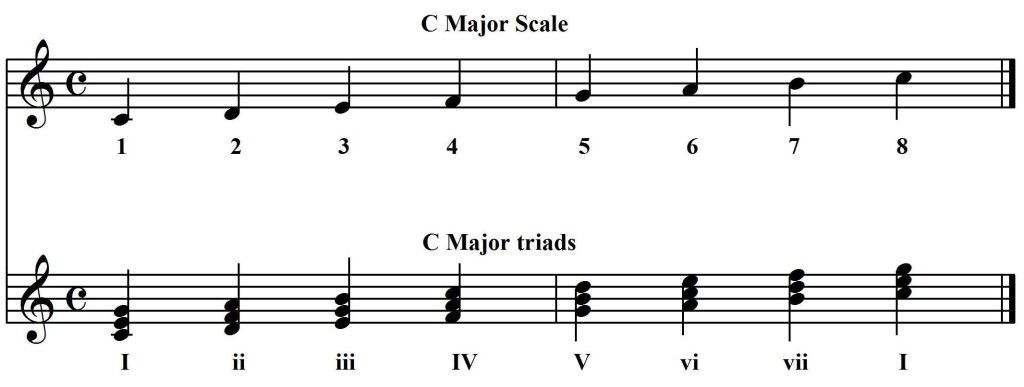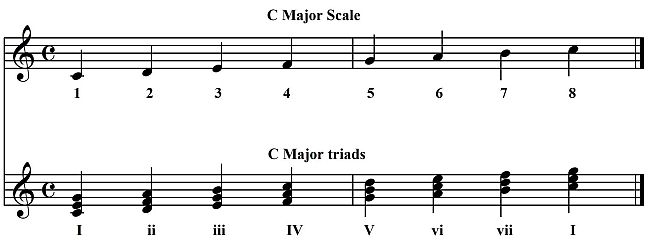How to Add Chord Substitutions: Final Lesson
Monday, October 14th, 2013Time to apply what was taught in lessons one through four on “How to Add Chord Substitutions”.
The following visual aid of the C Major scale and its chords will be helpful for this lesson!
Notice once again: The Major chords above are indicated by an upper case Roman numeral. The lower case Roman numeral indicates a minor chord.
Now for the fun part!…You’re about to learn how to find chord substitutions!
The bottom line: The three major chords listed above in the key of C: I, IV and V can be substituted with a minor chord. How do do this?
Look for a minor chord that has at least two notes in common with a major chord. For example: A iii chord (EGB) has two notes in common with the I chord (CEG). That means….a iii chord can replace a I chord in the right setting.
Ok….can you find the other minor chord that has two notes in common with the C (I) chord? Yes! the vi (ACE)
Your Quiz:
1. Find the two minor chords that have two notes in common with the IV chord.
2. How about the two minor chords that are compatible with the V chord?
~~~~~~~~~~~~~~~~~~~~~~~~~~~~~~~~~~~~~~~~~~~~~~~~~~~~~~~~~~~~
So…when to use the chord substitutions? When a major chord lasts for two or more beats…there is time to use a minor chord substitution! The melody note also dictates which substituted chord will sound right. (Hint: The left hand plays the chord substitution and the right hand may have to alter the alto note to match the substituted chord. (When playing from the hymnal)
*Special note: (Observation from one of my readers)…Just go up or down two chords from a Major chord to find its minor chord substitutions. (Thanks Victoria!)
I will provide visual examples in the next article!

